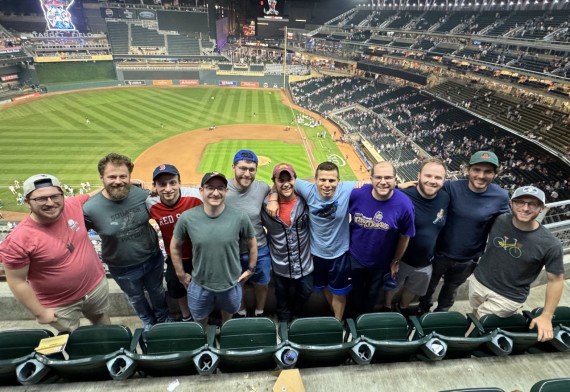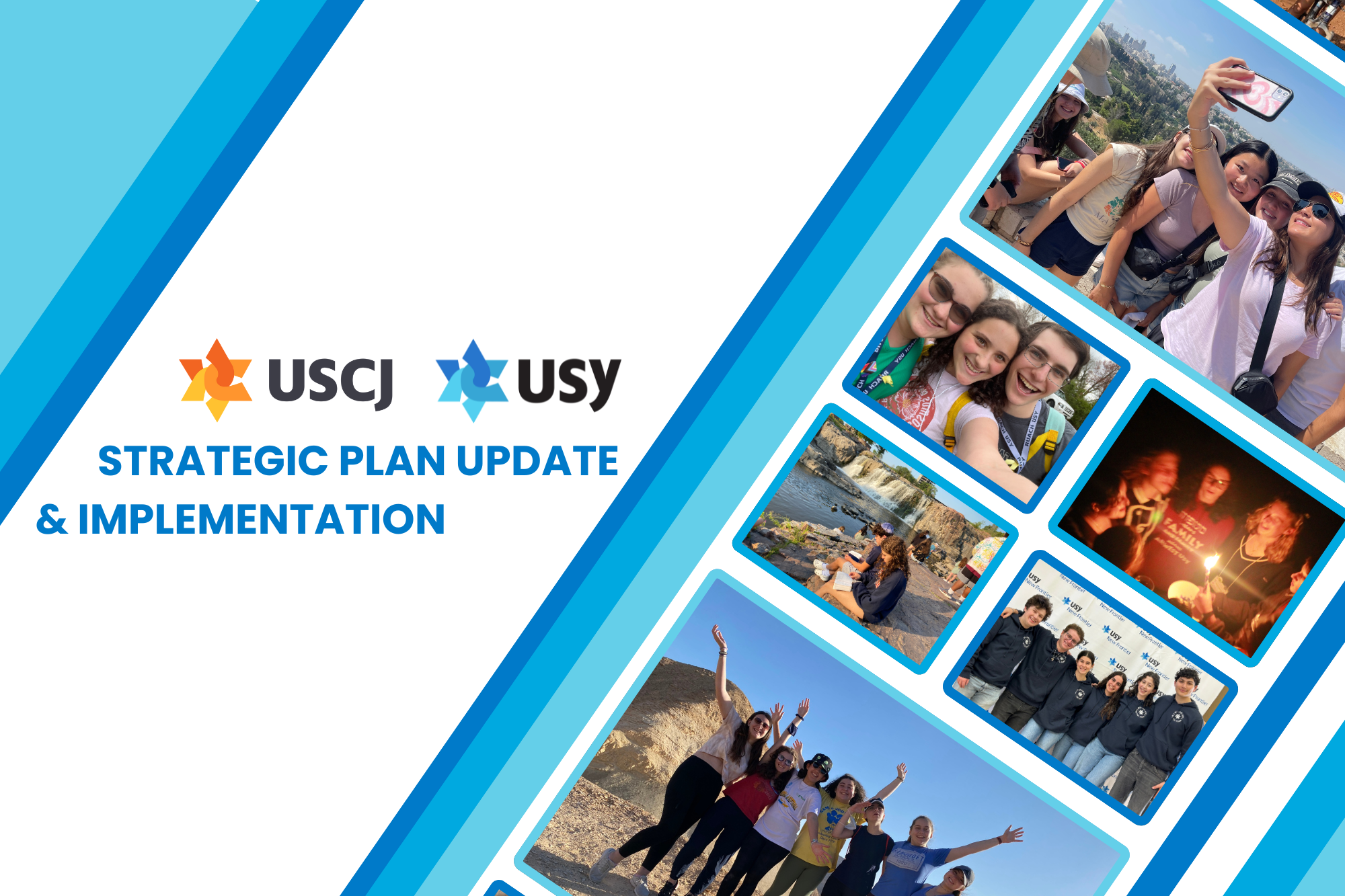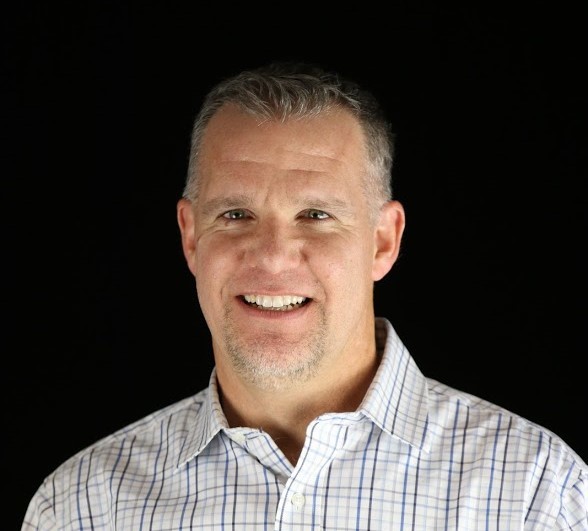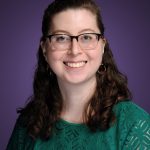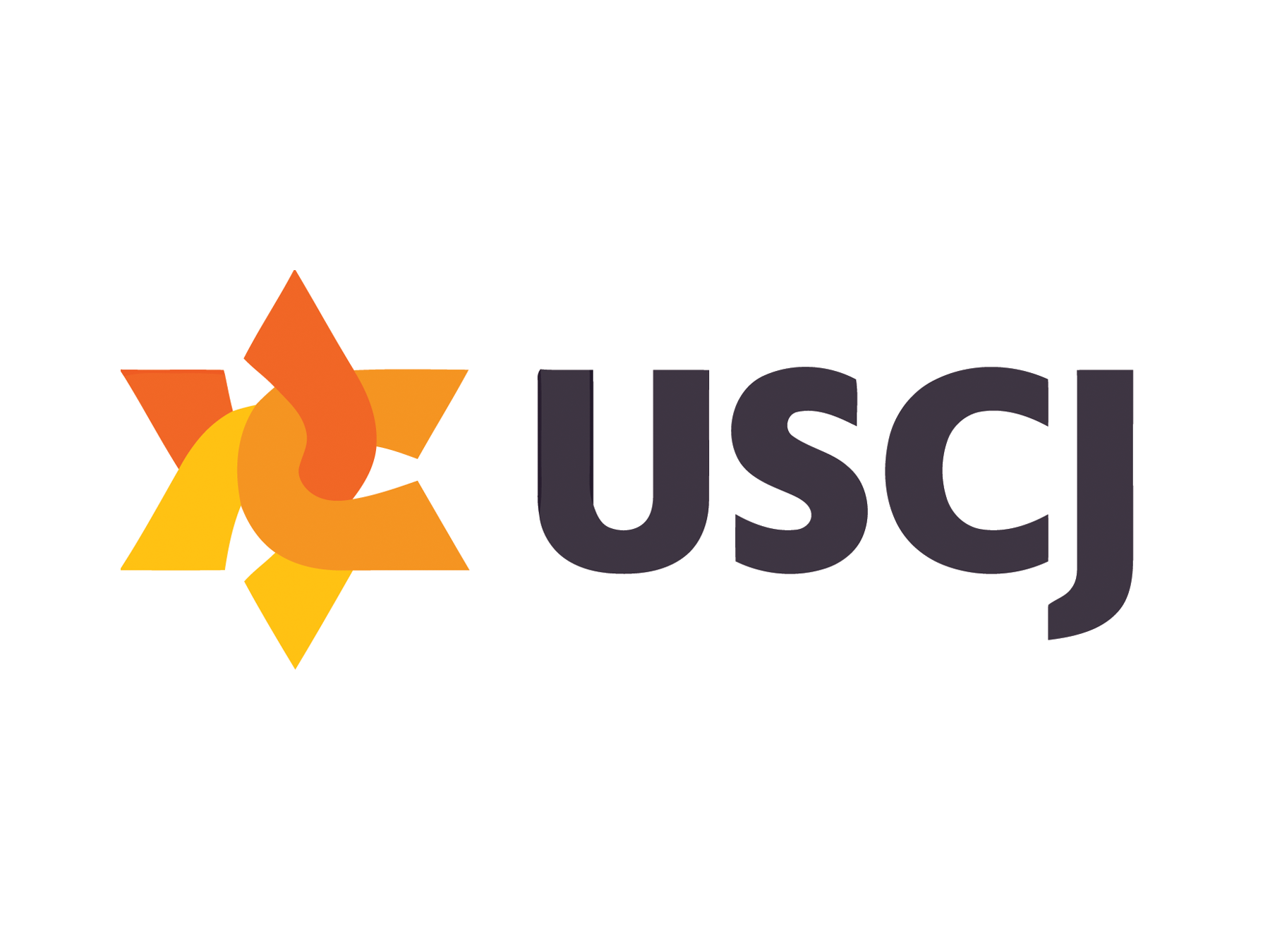USCJ’s Solomon Schechter Awards are designed to recognize initiatives that shape an authentic and dynamic experience of Conservative Judaism. More than 185 programs were submitted for consideration this year, and a panel of 15 judges carefully reviewed the entries to select the winners. All of the congregations presented their award-winning initiatives at the 2017 USCJ convention in Atlanta, GA.
The winning programs are:
Highest Award for Innovation and Impact
Ohev Shalom, Wallingford, PA – FUSE (Fellowship of Urban and Suburban Engagement)
FUSE (The Fellowship of Urban and Suburban Engagement) is a community network created by Ohev Shalom that connects urban and suburban residents in order to diminish the other-ness and fear within and between neighborhoods that often feed animosity and violence. FUSE activities, sponsored through diverse houses of worship and community organizations, include community conversations, clean-up projects, and one-to-one meal sharing. Most importantly, activities are designed to nurture diverse connections and create safe spaces where residents get to know each other on a deeper level. FUSE encourages individuals to go below the surface and have difficult conversations in order to lay the groundwork for practical actionable and measureable solutions that will improve individual lives in all our communities. Through relationship-building and deepening honest discussion, FUSE is working to convert the perception of stranger into neighbor.
Recognition of Excellence – Prophetic Voice (Tikkun Olam)
Ohavi Zedek Synagogue, Burlington, VT – Welcoming The Stranger
Ohavi Zedek has been doing the work of “welcoming the stranger” and breaking down the negative sense of “other” in a time of increased xenophobia. The congregation built a partnership with Vermont Refugee Resettlement Program, through which they offer daily English classes for newly arrived immigrants, free of charge. They created and broadened their “barn dollar” voucher program to support New Americans through the “Shalom Shuk” thrift store, helping them set up houses when they are newly arrived. Ohavi Zedek welcomed four new Syrian refugee families and helped them get settled in. They are also building educational programs such as an “Interfaith Seder” and a “Children of Abraham” to bring together communities from many different religions and houses of worship to share meals, study together, and build community. All of this work helps to bring the community closer together with their neighbors, and to remember that all are stronger together.
Recognition of Excellence – Israel
Temple Beth Torah Sha’arey Tzedek, Tamarac, FL – Twinning
Nesher is a development town near Haifa that is the sister city of Temple Beth Torah Sha’arey Tzedek’s local federation. Several years ago, they developed a twinning program between their religious school and Beit Yehoshua School in Nesher to connect students in both communities, teach cultural differences, instill the love of Israel, and provide a platform for students to communicate with Israeli students on a social and personal level.
About six Sundays a year, at 9 am ET and 4 pm Israel time, they set up cameras between gimmel – daled students and Beit Yehoshua School students of the same age. The students watched as each prepared songs and short plays in Hebrew and English. This past year the program was expanded for other age groups. For example, second graders did a Shabbat preparation with videos on both sides and comments posted by teachers. They also did one program with older children from the Judaica High School.
In addition, they had two special programs during the year: a song festival called Celebrating Music at the local Jewish Community Center and their auditorium, with children and then professional singers performing in both cities and joint participation in Temple Beth Torah Sha’arey Tzedek’s popular Six Million Steps program (for which they won a Solomon Schechter Award two years ago). Temple Beth Torah Sha’arey Tzedek, joined by three other synagogues, walked laps and raised money for the March of the Living, while Beit Yehoshua School had a parallel walk-a-thon in Nesher.
Congregation Beth Shalom, Atlanta, GA– Teen Scene
Congregation Beth Shalom’s Teen Scene class for students grades 8-12 spent the past year exploring the modern history of the State of Israel and how to advocate when confronted by those in their high schools and eventually on their college campuses. The curriculum combined material from the Jerusalem U/Stand Up for Israel Program and from the Center for Israel Education at Emory University. The course was taught by the Associate Director of the Center and by an Israeli/former member of the IDF. Through discussion, videos, and historical documents the students explored the dynamics of the Palestinian-Israeli conflict and developed tools to combat the BDS movement.
Congregation Beth El, Norwalk, CT – Chanting Our Way to Israel
Congregation Beth El’s Hebrew School students (grades 3-7) participated in an imaginary flight to Israel through a program in which the students earned flight miles by learning lines of Hebrew in their siddur curriculum, with a cumulative goal for the entire school to earn enough miles to fly to Israel and back. They partnered with El Al airlines, which sponsored a big kick-off event including a slide show about Israel. There were also individual rewards along the way (for a certain number of lines, students could earn El Al paraphernalia, such as posters, hats, pins, and flags; a big reward was a large Israeli Elite chocolate candy bar for each kid who passed the 20 lines mark. The program culminated in a school-wide field trip to the local sports center (in lieu of Israel).
Recognition of Excellence – Torah and T’fillah
Ohev Shalom, Wallingford, PA – Children of Israel Collection
The Children of Israel Collection is a series of fourteen midrashic works of art, each a ceramic-tiled mosaic in a frame, representing the twelve Tribes of Israel, Levi, and Dinah. Designed by a local artist, each mosaic was assembled by members of the congregation. Within each work, congregants embedded personal mementos: jewelry, cuff links, ID bracelets, Kiddush cups, mezuzahs, etc. Each mosaic provided an opportunity for study, as the congregation explored the history of each tribe and symbol, and related Midrashim. Even the decision of which Biblical figures to include served as a basis for discussion and learning. Ohev Shalom’s Children of Israel Collection combines the synagogue’s 100-year history with personal and family stories, bonded together onto these tangible teachings of Torah. The artwork compels people to learn about where they came from and who they are.
Temple Ramat Zion, Northridge, CA – Yad Squad
Knowing that reading Torah is not just for bar mitzvah kids, Temple Ramat Zion created Yad Squad, a Torah reading curriculum for ages 2 – 92. The program was designed to engage students beyond the typical years prior to bar/bat mitzvah and bring Torah to Life. Through the utilization of TROGA© (Yoga inspired trope positions), music, art, multimedia, collaborative/cooperative learning, chevruta style text study, chironomy, proprietary web applications (torahreaders.net) and the development of a learning community (a “Trope Troupe”), Ramat Zion turned a subject that some consider tedious and intimidating into something exciting and vibrant.
Congregation Etz Chaim, Cincinnati, OH – T’sha B’Av Many Languages
Congregation Etz Chaim created a one of a kind multimedia presentation for T’sha B’Av, a walking exhibit building consisting of nine stations in chronological order, each depicting an event that befell the Jewish people on this somber day. Each of the nine stations had a different language paired with it and an audio clip read by a congregant in their native language. A second audio clip featured nine other congregants reading the translation in English. Each station also featured a window frame with six sheets of information and artwork connected to each tragedy, chosen because they serve as reminders and small glimpses into the lives of fellow Jews who lived through these events.
Recognition of Excellence – Inclusion
Adath Israel Congregation, Lawrenceville, NJ –Wheels to Israel
The religious school students of Adath Israel did more than just pledge to support a Paralympic wheelchair basketball athlete on his quest to go to Israel as a part of the USA Maccabi Wheelchair Basketball team. They met with a player from their home state of New Jersey, Matthew Darlow, to learn the moves, address the challenges, and even try the maneuvering and ball handling skills that a wheelchair basketball player has to learn. Then, they took turns trying to figure out how to get the ball from this skillful player’s hands. Matt also spoke to them about his childhood, school and college years as a disabled youth and as a Jew.
Temple of Aaron, St. Paul, MN – Shavuot Interfaith Celebration
Temple of Aaron planned a day long Shavuot interfaith celebration that began before the holiday started with an Interfaith Community Farmers Market that connected the holiday back to its agricultural roots. The congregation brought in local vendors to share their foods, ranging from ice cream and coffee to knitwear and fermented products, as well as had programming for children including live music and a Bouncy House. Following the Farmers Market, they moved indoors for a community vegetarian potluck dinner followed by an Interfaith Panel on God and Revelation in which they brought together a reverend, a priest, an imam and a rabbi to share their views on God, revelation, and the divinity of scripture. Following the panel, each clergy member taught a class on Noah and the Flood from their unique faith perspective and the day concluded with an evening of Interfaith Learning with Maariv.
Recognition of Excellence – Kehilla
Temple Beth Sholom, Cherry Hill, NJ – Sephardic Seder
Temple Beth Shalom decided to host a Sephardic Seder to educate its membership about what happened to their Sephardic brethren during the Spanish Inquisition and how it influenced the Passover Seder. The question became how to present this in a way that would stress the beauty of Sephardic traditions in a way that was not too sad as it related to the persecution of the Jews of Spain but impart the important history lesson at the same time.
The congregation invited Galeet Dardashti to be the presenter of Sephardic music for the evening and created four stories, each representing different periods of time, from the very first Miriam of the Tanach, to a Miriam in 1492, a Miriam in the early 1900’s from Cuba and a Miriam from a town in Greece whose population was eventually killed in the Holocaust. The foods were carefully researched to reflect the many traditional foods served at a Sephardic Seder.
Temple Beth Shalom advertised the event in a local newspaper and ended up with 200 attendees.
Hollis Hills Bayside Jewish Center, Hollis Hills, NY – Congregational Nurse and Health/Chesed Fair
As part of its expanded Chesed committee and in conjunction with the pastoral work of its clergy, Hollis Hills Bayside Jewish Center created a voluntary congregational nurse position. The role of the nurse is to provide counsel to its members, not actual nursing care. The nurse helps members navigate social services; acts as a resource for Chesed and clergy in understanding the health challenges confronted by members; and visits those who are ill. They have since expanded this effort with a five-hour Health Fair featuring more than 15 vendors and talks on health related topics.

